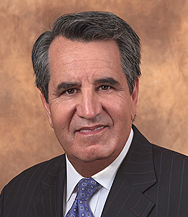2017 M&A activity for PR firms: The year of the ‘tuck-in’ transaction
My last column for 2017 is an appropriate time to look back at the consolidation, merger, and acquisition activity by and among PR firms.
According to data compiled by my law firm, there were 103 publicly announced and completed transactions worldwide in 2017 involving public relations firms. This reflects an increase of 14% in completed, publicly announced transactions from the 89 completed in 2016. This alone is significant because it demonstrates the existence of a robust M&A market for PR firms. Even more noteworthy is the nature and size of many of the transactions, as well as the factors that are causing owners to sell and buyers to buy.
According to our research, 35% of the 103 consummated 2017 transactions involved PR firms with less than $3 million in revenues. An additional 15% of the transactions involved sellers with revenues of between $3 million and $10 million. In other words, 50%, or more than 51 transactions, involved sellers whose firms had revenues of less than $10 million. It was indeed the year of the small deal, often designed as a “tuck in” to an existing firm, practice area, or specialty. This is especially true given that technology continues to bring forward a host of ever-changing and ever- growing practice areas and platforms on which savvy PR firms are able to capitalize.
Who were the buyers in 2017?
•66% of the deals involved independent PR firm buyers;
•29% involved public holding company buyers;
•5% involved private equity firm buyers.
In 2016, in contrast, independent PR firms were the buyers in only 59% of the consummated transactions. This data reflect that more firms, including more independently-owned firms, have adopted M&A as a growth strategy.
The next interesting question is what is causing the sellers to sell. Our research provides some answers. Overall, many firms are having a difficult time attracting and retaining talent. The talent marketplace has not only become more competitive, but top talent, based
on principles of supply and demand, has become more expensive. PR firms also face an increasingly specialized marketplace and one in which client budgets are declining or remaining flat, at least in the traditional service areas. The smaller firms, by definition, have a smaller revenue base, over which to amortize their operating costs. One way in which these firms can spread their operating costs over a larger base is to be part of a larger firm. Doing so may also allow the seller to spend more of his time on new business and client work, instead of taking time from those revenue-producing activities to run a smaller firm.
Buyers find many of these nimble, smaller PR firms attractive as a way to “acquire” entrepreneurial and other talent, enhance a service offering to its existing clients, or grow a practice area. Buyers are also finding it increasingly difficult to grow while relying solely on organic growth to increase revenues. Thus, combining organic growth, with smart or “tuck in acquisition” can be accretive for the buyers. This approach can also fill the different, but complementary needs, of both buyers and sellers.
The “hot” specialty areas of the firms that were bought and sold in 2017 are also noteworthy. Twenty-seven percent of the firms acquired identified themselves as technology or digital firms, 18% as integrated marketing communication firms, 12% as consumer firms, 8% as financial services, and 8% as healthcare firms, and a smattering of other speciality areas.
What is the M&A forecast for 2018? We are likely to see an equally robust M&A market in 2018. In fact, 83% of firms surveyed in late 2017 indicated that they had been approached within the last two years to sell their firms. More significantly, 56% of the responding firms thought it was likely or very likely that they would sell their firms prior to 2021.
Go here for Davis & Gilbert’s complete analysis about M&A trends and issues.
Michael Lasky is a senior partner at the law firm of Davis & Gilbert, where he leads the PR practice group and co-chairs the litigation department. He can be reached at mlasky@dglaw.com.
Click here for the original article.




